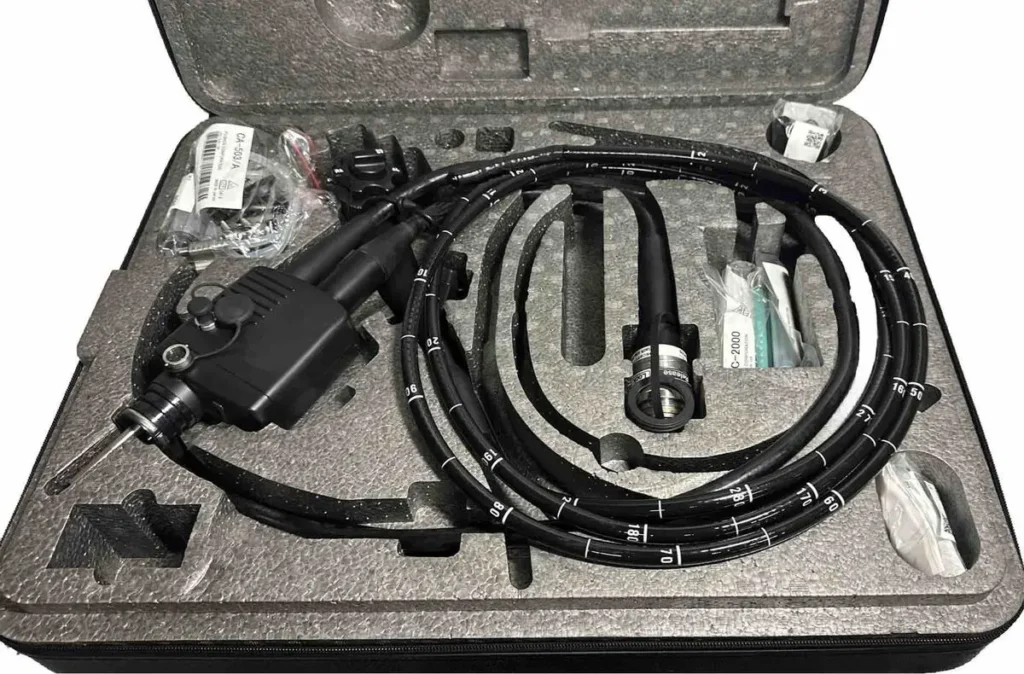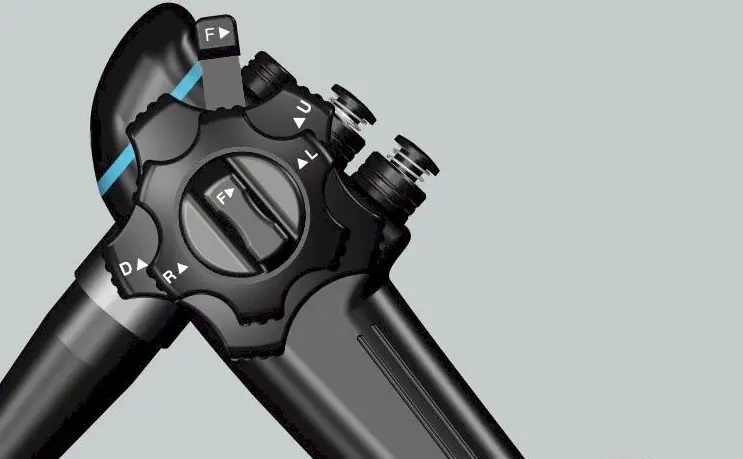Imagine a world where detecting, diagnosing, and treating ailments in our furry friends could be done with pinpoint accuracy and minimal invasion. This is the power of endoscopy equipment in the realm of veterinary care. Let’s delve into the transformative ways in which endoscopy tools can elevate the standard of care for our beloved pets.
1. The Innovation of Endoscopy in Veterinary Care
The innovation of endoscopy in veterinary care has revolutionized how veterinarians can examine and treat animals. By utilizing a small, flexible camera attached to a long tube, vets can now visualize internal organs and structures without the need for invasive surgery. This non-invasive approach not only reduces risks for the animals but also provides valuable insights that were previously unattainable.
Imagine the ability to navigate through the intricate pathways of an animal’s digestive system or respiratory tract with precision and ease. Endoscopy equipment allows for real-time visualization, enabling veterinarians to identify issues quickly and accurately. This innovation has truly paved the way for improved diagnostics and streamlined treatment procedures in veterinary medicine.
With endoscopy, veterinarians can now detect abnormalities, take biopsies, and even perform certain therapeutic interventions, all through tiny incisions or natural body openings. This minimally invasive approach not only reduces recovery times for the animals but also minimizes discomfort and risk associated with traditional surgical methods.
2. Exploring the Benefits of Endoscopy Procedures
Endoscopy procedures offer a multitude of benefits for both veterinarians and their patients. One of the key advantages is the ability to conduct detailed examinations without the need for invasive exploratory surgeries. This translates to less stress for the animals, shorter procedure times, and quicker recovery periods.
Moreover, endoscopy allows for targeted treatments by delivering medication directly to affected areas. This localized approach not only increases the effectiveness of treatments but also reduces the risk of side effects on other organs or tissues. The precise nature of endoscopic procedures ensures that interventions are tailored to each patient’s specific needs.
Additionally, the high-quality imaging provided by endoscopy equipment enables veterinarians to make accurate diagnoses and monitor the progress of treatments over time. This level of precision enhances the overall quality of care provided to animals, leading to better outcomes and improved well-being.
By exploring the benefits of endoscopy procedures, veterinarians can optimize their diagnostic and therapeutic capabilities, ultimately enhancing the level of care they offer to their animal patients. The transformative potential of endoscopy in veterinary medicine is reshaping the way we approach healthcare for our beloved pets.
3. Enhancing Diagnostics with Endoscopic Tools
One of the most significant ways in which endoscopic tools enhance veterinary services is through improved diagnostics. These advanced instruments allow veterinarians to visualize internal structures with exceptional clarity, aiding in the identification of diseases, abnormalities, and other health issues.
By obtaining real-time images of the gastrointestinal tract, respiratory system, or other internal organs, veterinarians can make more accurate diagnoses and develop tailored treatment plans for each patient. Endoscopic tools enable the detection of early-stage conditions that may not be visible through traditional diagnostic methods, leading to proactive and targeted interventions.
The ability to perform minimally invasive biopsies using endoscopic tools further refines the diagnostic process, allowing veterinarians to obtain tissue samples with precision and minimal discomfort for the animals. This not only expedites the diagnostic timeline but also reduces the need for more invasive procedures in the future.
4. Improving Surgical Precision Through Endoscopy
Endoscopy equipment plays a crucial role in improving surgical precision in veterinary procedures. By providing a direct visual feed of the internal organs, tissues, and structures, veterinarians can perform surgeries with unparalleled accuracy and control. This precision minimizes the risk of complications and ensures better outcomes for the patients.
The minimally invasive nature of endoscopic surgeries results in smaller incisions, reduced trauma to surrounding tissues, and faster recovery times for the animals. This approach not only enhances the welfare of the patients but also optimizes the efficiency of surgical interventions. Veterinarians can now perform intricate procedures with confidence and efficacy, thanks to endoscopy equipment.
Whether conducting tumor removals, foreign body retrievals, or other complex surgeries, endoscopy tools allow veterinarians to navigate through delicate anatomical structures with precision and dexterity. The integration of endoscopy in surgical workflows leads to safer procedures, improved post-operative care, and overall better surgical outcomes for veterinary patients.
5. Endoscopy: A Non-Invasive Approach to Treatment
Endoscopy offers a non-invasive approach to treatment in veterinary medicine, revolutionizing how certain conditions are managed in animals. Instead of resorting to traditional open surgeries, veterinarians can now address issues through minimally invasive endoscopic procedures, which pose less risk and offer quicker recovery times.
The ability to visualize internal structures in real time allows veterinarians to guide instruments and treatments with precision, delivering targeted therapies directly to the affected areas. This targeted approach minimizes collateral damage to healthy tissues, reduces post-operative discomfort, and accelerates the healing process for the animals.
From removing foreign objects to treating gastrointestinal disorders, endoscopy provides a less traumatic alternative to conventional surgical methods. Animals undergoing endoscopic treatments experience less pain, reduced scarring, and faster return to normal activities, making it a preferred choice for both veterinarians and pet owners seeking optimal care outcomes.
6. The Role of Endoscopy in Preventive Veterinary Care
Endoscopy plays a vital role in preventive veterinary care by enabling early detection of potential health issues before they escalate into more serious conditions. Routine endoscopic screenings allow veterinarians to identify abnormalities, lesions, or early signs of diseases that may not be outwardly visible during physical examinations.
Through proactive monitoring and surveillance using endoscopy equipment, veterinarians can intervene at the earliest stages of disease development, leading to better prognoses and treatment outcomes for the animals. Preventive endoscopic procedures help maintain the overall health and well-being of pets, promoting a higher quality of life and longevity.
By incorporating endoscopy into preventive care protocols, veterinarians can offer comprehensive health assessments that go beyond surface-level evaluations. The ability to investigate internal organ function and structure aids in the early identification of potential risks, allowing for timely interventions that can significantly impact the long-term health of companion animals.
7. Endoscopy Equipment: Ensuring Early Detection of Conditions
Endoscopy equipment plays a critical role in ensuring early detection of various medical conditions in veterinary patients. By providing a clear view of the internal anatomy, endoscopic tools allow veterinarians to identify abnormalities, changes, or early signs of diseases that may not be evident through external examinations.
Early detection facilitated by endoscopy equipment enables veterinarians to initiate timely interventions and treatment plans, improving the prognosis for affected animals. The ability to catch diseases in their incipient stages enhances the chances of successful outcomes, reduces the need for extensive treatments, and increases the overall survival rates of veterinary patients.
Whether screening for gastrointestinal issues, respiratory conditions, or urinary tract abnormalities, endoscopy equipment serves as a powerful diagnostic tool that empowers veterinarians to detect and address health concerns proactively. Early detection through endoscopic evaluations leads to better management of diseases and a higher quality of life for the animals under care.
By embracing endoscopy equipment as a standard component of veterinary diagnostics, practitioners can elevate the level of healthcare they provide and ensure that pets receive timely attention for any underlying conditions. Early detection truly makes a difference in the well-being and longevity of our beloved animal companions.
8. Future Trends in Veterinary Medicine: Endoscopy Advancements
The future of veterinary medicine holds exciting advancements in endoscopy technology, paving the way for even more innovative and effective diagnostic and therapeutic applications. Ongoing research and development efforts are focused on enhancing the capabilities of endoscopic tools, making them more versatile, user-friendly, and precise in veterinary settings.
From improved imaging technologies to advanced robotic systems, the evolution of endoscopy equipment is set to revolutionize how veterinarians approach healthcare for animals. These advancements promise greater diagnostic accuracy, enhanced treatment modalities, and expanded procedural possibilities, all aimed at optimizing outcomes and improving patient care.
As endoscopy continues to evolve, we can expect to see increased integration of artificial intelligence, miniaturization of devices, and enhanced connectivity features that streamline data analysis and communication. These futuristic trends in endoscopy advancements herald a new era of personalized, precise, and patient-centric veterinary care that prioritizes the well-being of our animal companions.




